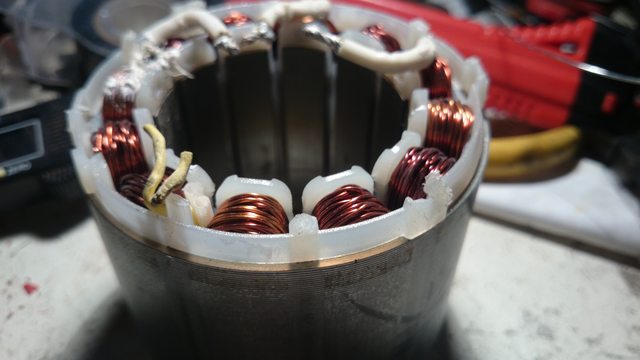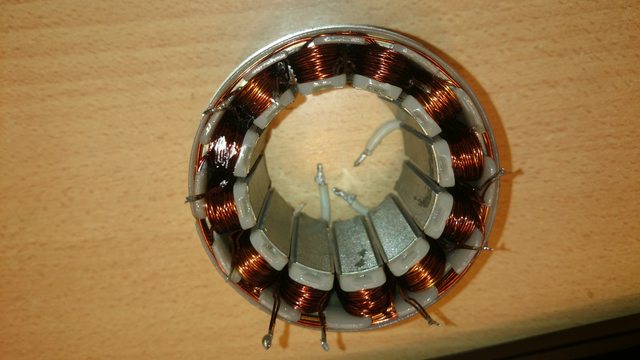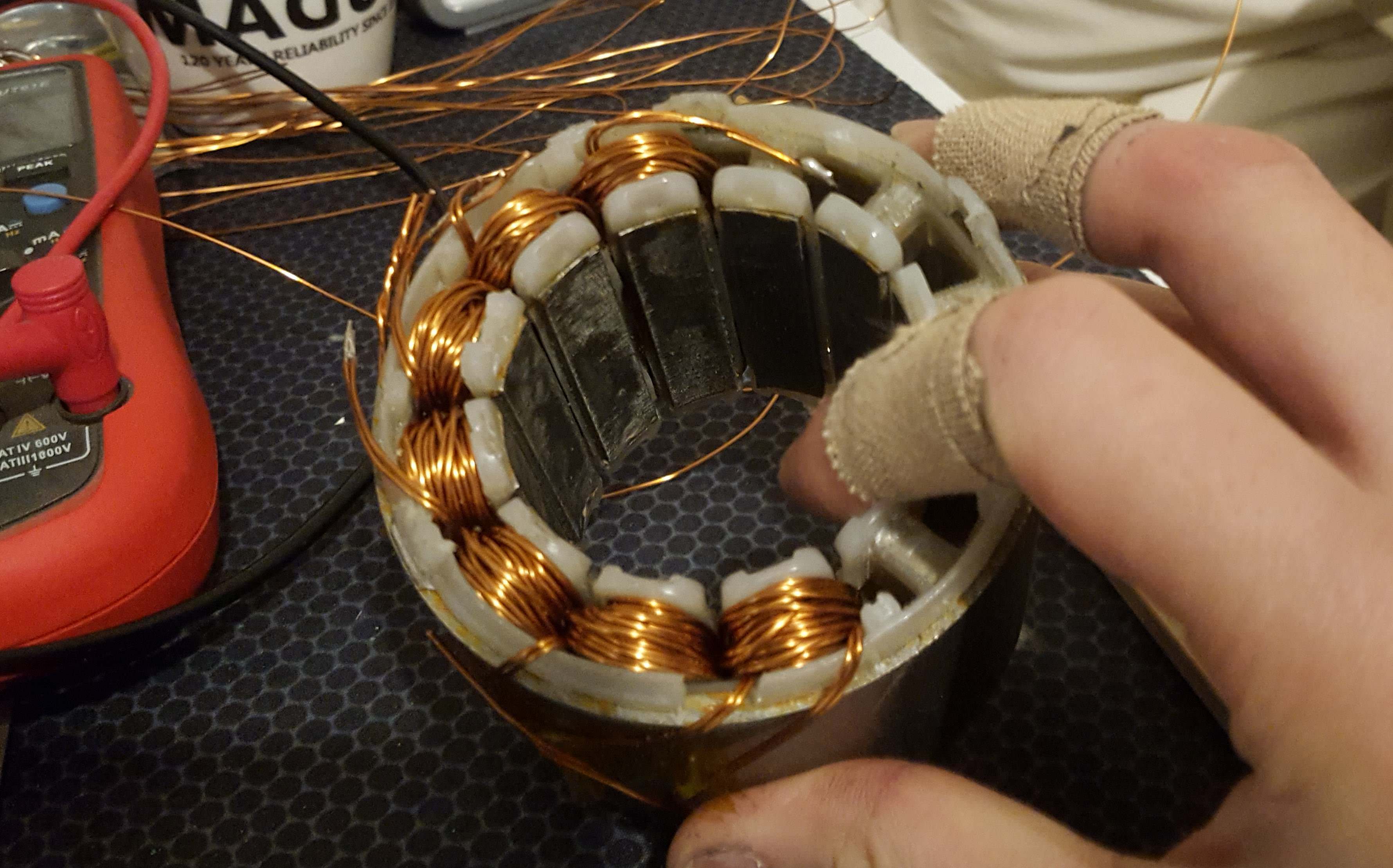district9prawn
1 kW
I've recently removed the stator from a cyclone inrunner motor. As you can see from the pics, the copper fill isn't exactly great. Is there any reason why I could not separate the windings from the star termination and throw a few extra turns on each stator tooth? It seems like there is quite a bit of unused space between the teeth. There should also be plenty of room on the ends of the stator teeth since some space will be freed up by removing the hall boards and running sensorless. Hopefully this should decrease the kv a little and increase the output of the motor a bit.







